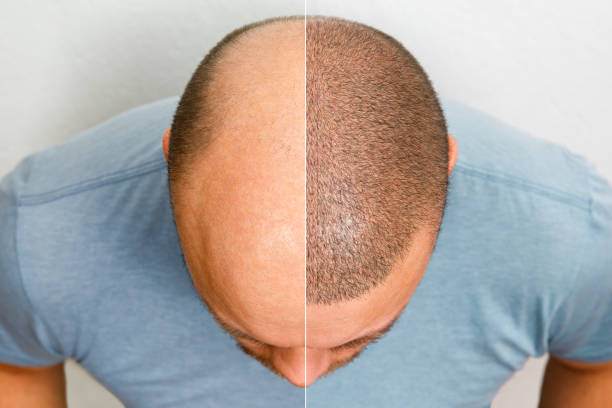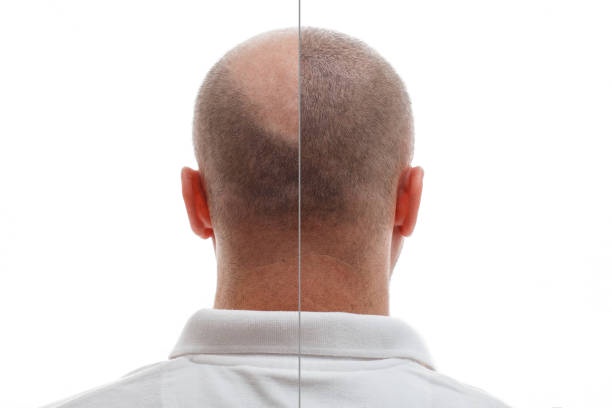Hair loss is a prevalent concern affecting millions of people worldwide, leading many to seek effective solutions to restore their hair and confidence. While hair transplantation has gained popularity as a permanent and surgical option, it's essential to explore non-surgical alternatives that cater to different preferences and needs. In this article, we will delve into various non-surgical approaches to address hair loss, providing insights into their effectiveness and considerations for those seeking alternatives to traditional hair transplant procedures.
-
Topical Treatments
Topical treatments are among the most common non-surgical alternatives to hair transplantation. These solutions typically come in the form of shampoos, creams, or foams that contain active ingredients aimed at promoting hair growth and preventing further loss. Minoxidil is a well-known topical treatment that has been FDA-approved for its efficacy in stimulating hair growth. Users apply it directly to the scalp, and its vasodilator properties enhance blood flow to the hair follicles, encouraging healthier and thicker hair.

-
Platelet-Rich Plasma (PRP) Therapy
Platelet-Rich Plasma (PRP) therapy is a non-surgical procedure that involves drawing a small amount of the patient's blood, processing it to concentrate the platelets, and then injecting the PRP into the scalp. Platelets contain growth factors that can stimulate hair follicles and promote hair regrowth. While the evidence supporting PRP's effectiveness is still evolving, some studies suggest it can be a viable option for those looking for non-invasive alternatives to traditional hair transplant surgery.
-
Low-Level Laser Therapy (LLLT)
Low-Level Laser Therapy (LLLT) is another non-surgical approach to combat hair loss. This treatment involves exposing the scalp to low-level lasers or light-emitting diodes (LEDs). The light energy is absorbed by the hair follicles, stimulating cellular activity and promoting hair growth. LLLT is available in various forms, including laser combs, helmets, and caps for home use. Although research on LLLT's efficacy is ongoing, some studies indicate positive outcomes in slowing down hair loss and enhancing hair density.
-
Prescription Medications
Prescription medications, such as finasteride, offer a pharmaceutical option for individuals experiencing hair loss. Finasteride works by inhibiting the action of the hormone dihydrotestosterone (DHT), which is implicated in hair loss. While effective for some, it's essential to consult with a healthcare professional before considering prescription medications, as they may have side effects that need to be carefully considered.
-
Hair Growth Shampoos and Conditioners
Specialized hair growth shampoos and conditioners are designed to nourish the scalp and hair follicles, promoting a healthy environment for hair growth. These products often contain a combination of vitamins, minerals, and botanical extracts believed to support hair health. While they may not provide dramatic results, they can be part of a holistic approach to maintaining and improving the condition of existing hair.
-
Scalp Micropigmentation (SMP)
Scalp Micropigmentation (SMP) is a non-surgical cosmetic procedure that involves tattooing the scalp with tiny pigment deposits to create the illusion of a closely shaved head or a fuller hairline. This technique is particularly popular for individuals with thinning hair who want to achieve a more defined and youthful appearance without undergoing surgery. SMP requires skillful practitioners to ensure a natural-looking result.
-
Hair Fibers and Concealers
For a quick and temporary fix, hair fibers and concealers can be effective in camouflaging thinning areas. These products, usually made from keratin or other natural materials, adhere to existing hair, instantly creating the appearance of fuller and thicker hair. While they do not address the root cause of hair loss, they provide a cosmetic solution for those seeking immediate results.
Considerations and Conclusion
When exploring non-surgical alternatives to hair transplantation, it's crucial to manage expectations and understand that results may vary from person to person. The effectiveness of these options can depend on factors such as the cause of hair loss, individual health, and adherence to treatment protocols.
Choosing the right non-surgical approach requires careful consideration of factors such as convenience, cost, and the extent of desired results. Additionally, consulting with a qualified healthcare professional or dermatologist is essential to receive personalized advice based on individual circumstances.
In conclusion, non-surgical alternatives to hair transplantation offer a diverse range of options for individuals seeking to address hair loss without undergoing surgery. From topical treatments to innovative therapies like PRP and LLLT, there are numerous avenues to explore. Understanding the available alternatives and making informed decisions based on individual needs and preferences can empower individuals on their journey to achieving a fuller, healthier head of hair without the need for a traditional hair transplant procedure.


No comments yet